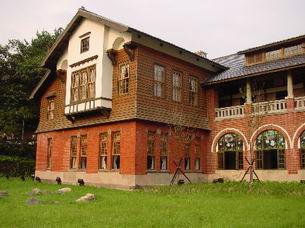Beitou Hot Spring Public Bath
The Beitou Hot Spring Public Bath was built and opened during the early days of Japanese colonial rule, as the Japanese traditionally believed hot springs to possess healthful and therapeutic effects, yet most bathhouses at the time were too expensive for average people to afford. The Taipei Prefectural Government began constructing the Beitou Hot Spring Public Bath in 1911, and upon its completion in 1913, opened it to ordinary members of the Japanese public at reasonable rates. 
The building was constructed of both bricks and wood. The first floor utilized brick-and-concrete composite walls, in the upper portion of which were placed stained glass windows, while the second floor featured wooden clapboard siding. Vents were installed in the black tile roof. The elegant building reminiscent of a British countryside villa fits perfectly with its surroundings in Beitou Park.
Through the efforts of local community members, it was declared a Class Three National Historical Site in 1997. Following renovations in 1998, the Taipei City Government transformed it into the Beitou Hot Springs Museum, introducing the building’s graceful architectural elements, general knowledge of hot springs, and the unique characteristics of hot spring baths in Taiwan.

![Taiwan.gov.tw [ open a new window]](/images/egov.png)
